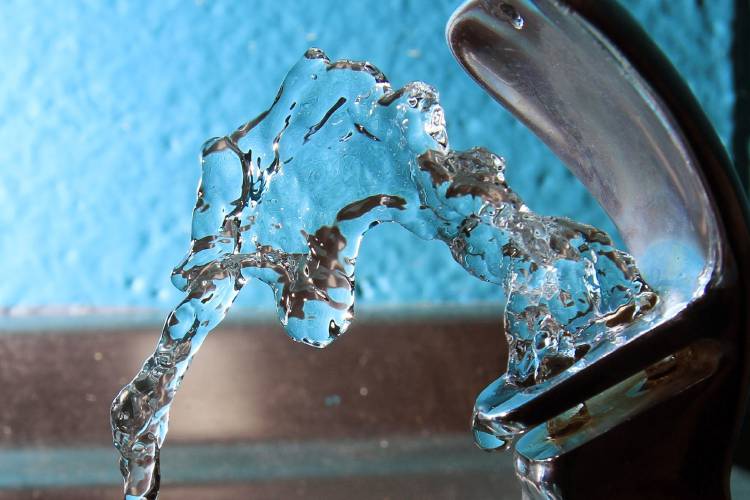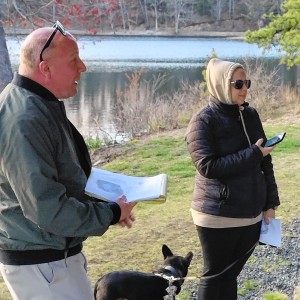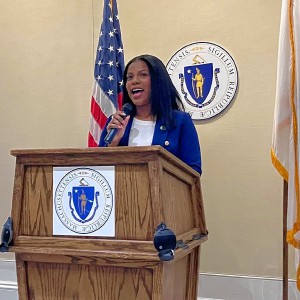New fed rules may force Mass. action on PFAS

AP AP
|
Published: 04-11-2024 5:00 PM
Modified: 04-19-2024 2:53 PM |
Nearly 200 water systems across Massachusetts — including towns, schools and hospitals — will likely need to take some action to comply with new federal limits on “forever chemicals” in drinking water, state regulators said Wednesday, a potentially expensive proposition.
The U.S. Environmental Protection Agency announced what it called “the first-ever national, legally enforceable drinking water standard to protect communities from exposure to harmful per-and polyfluoroalkyl substances (PFAS).”
The rules tackle some of the same chemicals that Massachusetts regulates (and some that Massachusetts does not already regulate), but with an approach that could have ramifications across the state.
PFAS are a class of man-made chemicals that do not break down entirely in the environment, and exposure to their long-lasting presence has been linked to serious and negative health impacts like thyroid disease and kidney cancer. PFAS chemicals are used in non-stick cookware, food packaging, children’s products, carpets, leather goods, ski wax, firefighting foams and more, and they have leached into drinking water supplies and the soil.
PFAS contamination in excess of the state limit has been found in at least 173 public drinking water systems in more than 86 Massachusetts communities since 2020. The Mass. Department of Environmental Protection said Wednesday it is working with 47 public water systems where PFAS levels remain over the standard.
“Based on the latest science, the EPA has issued stronger limits on PFAS in drinking water than the commonwealth’s existing regulation. This will significantly increase the number of public water systems across the state that will need to make significant investments to comply with the new federal rule,” Clint Richmond, conservation chair for the Massachusetts Sierra Club, said. “These costs should not be borne by ratepayers or taxpayers when the problem stems from decades of industries using these toxic forever chemicals.”
Massachusetts currently regulates six PFAS compounds in drinking water with a cumulative threshold of 20 parts per trillion (ppt). The framework the EPA announced would set individual and enforceable maximum contaminant levels for two of those compounds, PFOA and PFOS, at 4 ppt. The federal rules would also set maximum contaminant levels of 10 ppt for two other compounds that Massachusetts includes in its regulation (PFHxS and PFNA), as well as for two compounds that Massachusetts does not specifically regulate (HFPO-DA and PFBS).
A spokesperson for MassDEP said the department is reviewing the new federal regulations but added that Massachusetts “will update our standards to align with the new federal level.”
Article continues after...
Yesterday's Most Read Articles
 Carol Doucette of Royalston receives $15,000 from Publishers Clearing House
Carol Doucette of Royalston receives $15,000 from Publishers Clearing House
 State documents show Northfield EMS chief’s paramedic license suspended over failure to transport infant
State documents show Northfield EMS chief’s paramedic license suspended over failure to transport infant
 Plan calls for upgrades to Silver Lake in Athol
Plan calls for upgrades to Silver Lake in Athol
 Royalston’s FinCom debates proposed salary increases
Royalston’s FinCom debates proposed salary increases
 What are the protocols for emergency transport of infants?
What are the protocols for emergency transport of infants?
 Magic comes to Red Apple in Phillipston
Magic comes to Red Apple in Phillipston
“We have provided more than $504 million in grants and loans directly to communities to combat PFAS contamination and build new treatment infrastructure,” spokesman Ed Coletta said. “The department will continue supporting systems in our cities and towns to keep drinking water safe for all.”
The EPA’s new PFOS and PFOA standards of 4 ppt each would impact 181 community water systems (suppliers that provide drinking water to the same population year-round) and non-transient non-community public water systems (places like schools, factories, office buildings and hospitals that have their own water systems) in Massachusetts, MassDEP estimated. PFOS and PFOA are the compounds most commonly found in Massachusetts drinking water, MassDEP said.
Of the 181 impacted systems, 86 are already working with MassDEP because they previously or currently exceed the Massachusetts limits. And MassDEP estimated that 95 water systems will need to address PFAS for the first time under the new federal rules because their latest testing results showed PFAS levels below the state’s current 20 ppt threshold but above the new federal limit of 4 ppt.
Mindful of the costs associated with PFAS testing, monitoring and remediation, the EPA highlighted potential funding sources in its announcement Wednesday.
The agency said the so-called Bipartisan Infrastructure Law provided $9 billion specifically to invest in communities with drinking water impacted by PFAS and other emerging contaminants, including more than $5 billion in grants specifically for small or disadvantaged communities. There is also another $12 billion in Bipartisan Infrastructure Law money for drinking water state revolving funds.
In late March, Massachusetts regulators finalized $1.4 billion in loans and grants to finance 168 water and wastewater infrastructure projects, including efforts to address PFAS contamination.
Public water systems will have three years to complete the EPA’s initial monitoring requirements, must inform the public of the level of PFAS measured in their drinking water and “must implement solutions to reduce PFAS in their drinking water to levels below the standards within five years,” the EPA said.
Environmental groups and consumer advocates used Wednesday’s announced from the EPA to renew their calls for Beacon Hill to pass a bill to ban the use of PFAS in most products to prevent new contamination, require sellers to inform customers if PFAS chemicals are present in their products, and create new programs to clean up contamination that already exists.
“These chemicals didn’t even exist before the 1940s and now they contaminate water worldwide and are in the blood of every American that has been tested,” Laura Spark, environmental health program director at Clean Water Action, said. “It’s time for Massachusetts to join other states that are protecting their residents by preventing the continued manufacture and sale of products with toxic PFAS.”
Originally filed by Rep. Kate Hogan of Stow and Sen. Julian Cyr of Truro, the bill (H 2197 / S 1356) was rewritten by the Joint Committee on Public Health late last month and the redraft (H 4486) is now pending before the Joint Committee on Health Care Financing.
As originally written, the Hogan and Cyr legislation would also create a PFAS Remediation Trust Fund that would steer grant dollars to municipalities and water systems to help clean up contamination in drinking water, groundwater and soil.

 Wendell Special Town Meeting to decide on battery storage bylaw
Wendell Special Town Meeting to decide on battery storage bylaw McGovern, Gobi visit development sites in Greenfield, Wendell
McGovern, Gobi visit development sites in Greenfield, Wendell North Quabbin Notes, April 27
North Quabbin Notes, April 27 Cannabis sales in Massachusetts top $1B for third straight year
Cannabis sales in Massachusetts top $1B for third straight year